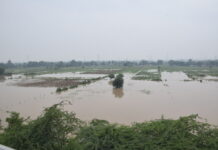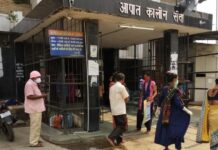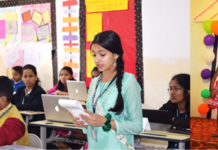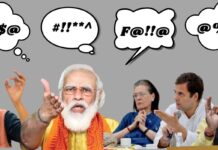[vc_row][vc_column][vc_column_text]
Elections in four states and a Union territory at a time when the people in the country were dying in hundreds due to the second wave of corona pandemic not only was reflected the arrogance of the political establishment but also apathy towards the sufferings of the common man. As if this was not enough, panchayat polls were imposed on the state of Uttar Pradesh which took a heavy toll on the valuable lives of the citizens. This points to the arrogance of the political parties.
The results also confirmed that voters cannot be taken for granted and extensive electioneering with the infusion of huge money does not necessarily bring in favourable outcomes. The unpredictable nature of politics, viewed from the outcomes of the recent electoral results, certainly indicate a few future trends and those would be observed closely by all stakeholders. The politics of Uttar Pradesh draws more attention than other states presently.
The failure of the Bharatiya Janata Party (BJP) to breach the Mamata Banerjee West Bengal fortress has given enough space for main the Opposition and regional parties to unite. Given the ongoing trend in the politics, a third or fourth political force may also rise. That is be the singular most important take-away from the Assembly poll results from West Bengal.
For the saffron brigade, drawing a blank in Kerala even with a candidate of Metro Man E. Sreedharan’s stature on their side dealt yet another, this time a decisive, blow on their future prospects in the state. In Kerala, as also in other states, all predictions fell flat on their face where defying the ‘alternate government’ syndrome, people preferred the incumbent left alliance once again.
In Assam, the BJP managed to return to power by the skin of its teeth overcoming a strong anti-incumbency factor. Of course, the BJP with its allies also managed to win the Puducherry seat. But challenges ahead for the party, both on organisational and governance fronts, are huge.
Presently the BJP rules two prominent states, Uttar Pradesh and Gujarat. Both these states stand battered by the COVID-19 onslaught. The pandemic has exposed the chinks in the armour of the state governments in dealing with healthcare emergency caused by steep rise in corona cases and resultant deaths. The people have started questioning the state governments over their apathy in the face of the death and mayhem.
Widely known for its effective electoral strategies, planning and execution, after the elections, the party has come under public scanner in the country as never before. So much so that currently at stake is its fortune in Uttar Pradesh and Gujarat where it is in power
The Yogi Adityanath government in Uttar Pradesh is under pressure from the farmers protesting against the Centre’s new farm laws and the mishandling of the second wave of COVID-19. With the farmers’ anger against the BJP governments both at the Centre and the state had been increasing with each passing day three dominant communities Jats, Dalits, and Muslims are alienated from the ruling party.
Jats and Dalits constitute formidable vote bank for the BJP along with the upper castes. The recent Panchayat polls reflected the popular mood in rural areas of Uttar Pradesh. Only Chief Minister Yogi could manage a slightly better performance in his constituency in the elections that swept away Kashi, Mathura, and even Ayodhya from the party’s fold. This reflects the fast diminishing popularity of the BJP at village level.
The ruling party is in the dock for conducting the local elections amidst the havoc wreaked by unprecedented Covid surge. The indiscretion on the part of the government cost the party dear which reflected in the drubbing it got at the hustings.
On the political front, it is widely admitted that the result of Bengal will have a far-reaching implication for Uttar Pradesh where elections are due in 2022 and the 2024 parliamentary election. Though the BJP could increase its tally in West Bengal, the high-pitched election campaign Prime Minister Narendra Modi and Home Minister Amit Shah were banking on could not work out as they had planned.
The saffron party may still opt to play its Hindutva card more forcefully in future elections, but given its debacle in the panchayat polls, especially in Kashi, Mathura and Ayodhya, it won’t make a viable poll strategy. Hence, social engineering based on caste politics is the only option left for the party. But going by the ongoing trend this too is unlikely to prove winning strategy either. The ruling dispensation’s omissions and commissions in handling the Covid crisis is yet another concern for Yogi who has miserably failed on good
governance.
With the Dalits alienated from the BJP due to the mishandling of a rape case there is also a need to understand the vote composition in UP, where Muslims accounted for 20 per cent, Dalits 20 per cent, upper castes 20 per cent and Other Backward Castes (OBCs) 40 per cent of the votes. The sliding of the nearly 40 per cent votes (Dalit and Muslims) and a considerable chunk from OBC (Jats) can write a different electoral story in the state. Was it predictable that the BJP would win with a massive mandate in 2017? No, the party’s unprecedented win was a bolt from the blue.
With 9 per cent Brahmins and Rajputs and Vaishya constituting 4 per cent each of the total population upper castes account for roughly 20 per cent of the state’s population. With over 40 per cent of the population OBCs are the most formidable political force in the state.
In 2017, the BJP had garnered 62 per cent of the upper caste votes against the Mahagathbandhan’s (Samajwadi Party, Congress, and BahujanSamaj Party Grand Alliance) 18 per cent of the votes while Mayawati’s Bahujan Samajwadi Party had gained 10 per cent. Thus, the BJP could be able to sweep the upper caste vote.
Of the total Muslim voters, only 2 per cent went with the BJP, while 70 per cent voted for the Mahagathbandhan (Congress and SP) and 16 per cent for the BSP. The poll results indicated that the OBCs swung the power balance. The BJP had managed to grab nearly 58 per cent of the OBC votes including a very chunk of Jat votes. In this space, the Mahagathbandhan (18 per cent) and the BSP (11 per cent) could not match the electoral onslaught of the BJP.
In the current situation, Jayant Choudhary of RLD has regained his strength among Jats and Muslims of the western part of the state. On May 2, regional political veterans such as Mamata Banerjee, MK Stalin and PinarayiVijayan emerged victorious,
overcoming all challenges posed by the Opposition. Moreover, the electoral outcomes in these states are a clear warning to the ruling dispensations in Uttar Pradesh and Gujarat, slated to go for poll next year, to keep their houses in order.
Anyway, the current political landscape and the rapidly swinging mood of Indian voters facing an unprecedented health crisis in the form of COVID-19 and its cascading effects on human lives are all set to determine the fate of the ruling parties in any state. Hence, the BJP is in for a shock as tough electoral battles awaits it in Uttar Pradesh and Gujarat in the 2022, and perhaps in the 2024 general elections as well.
[/vc_column_text][/vc_column][/vc_row]
Disclaimer: We do undertake rigorous checks on content provided by contributors before publishing the same. If you come across some factual errors, kindly bring this into our notice and we shall review your objection and claim as per our policy and display correction credits and corrections on the article itself.
The opinion expressed in the article is of the writer. Writer is a freelance journalist/journalist based in Delhi





























